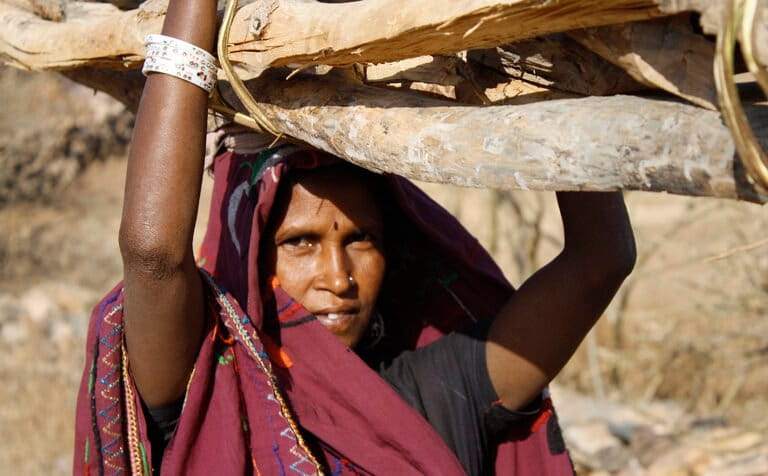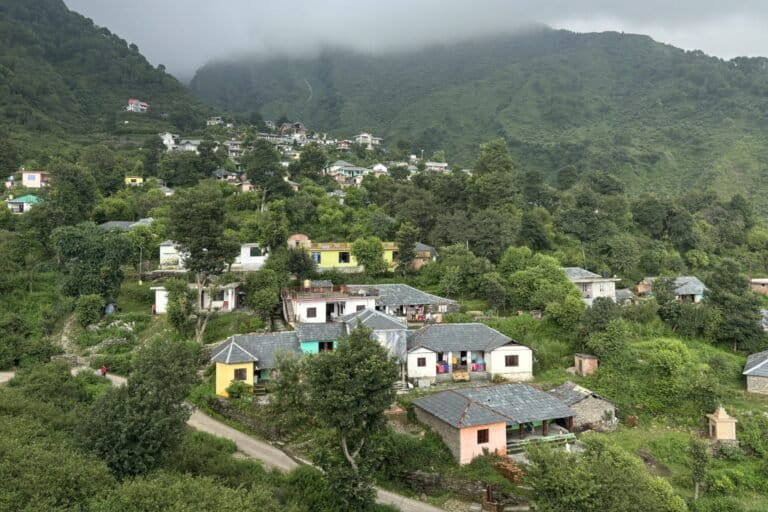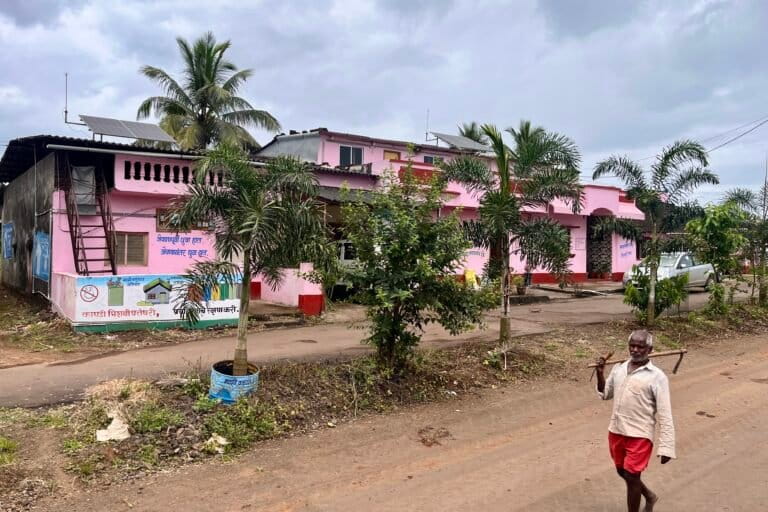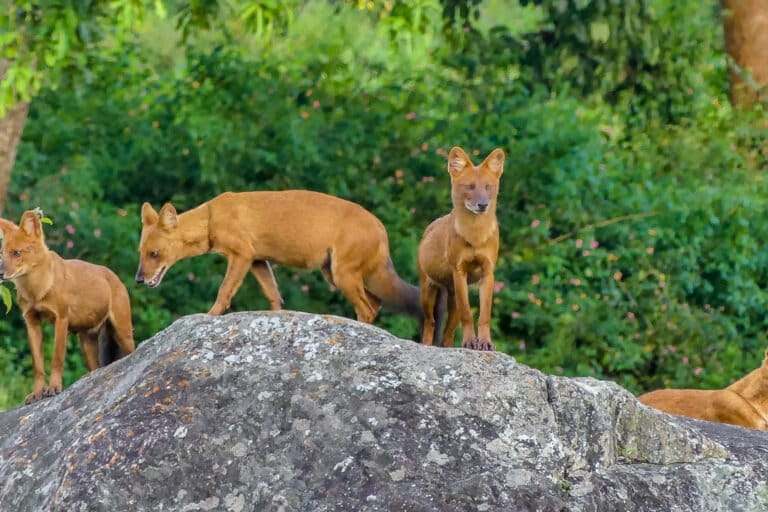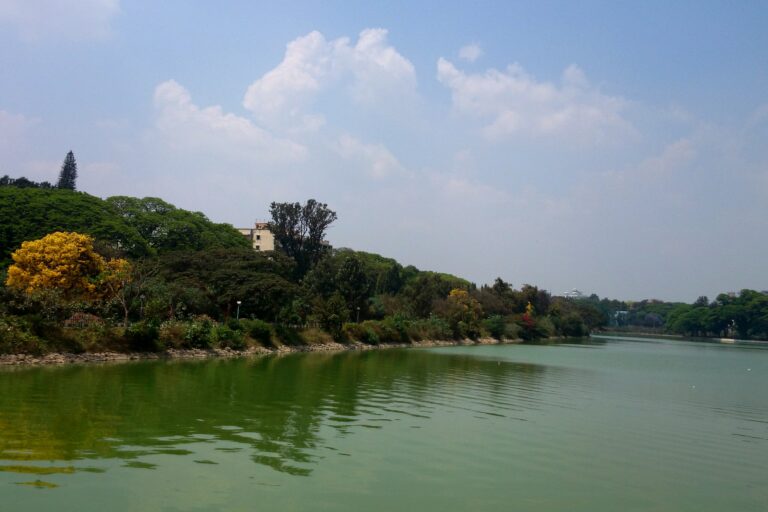- In the absence of grid-connected power supply which reached only in 2018, many islands in India’s Sundarbans were powered by solar energy. Now, about two dozen solar assets, lie abandoned on these islands.
- Between 1996 and 2006, the West Bengal Renewable Energy Development Authority (WBREDA) installed 17 solar power plants with a cumulative installed capacity of 872.5 kilowatts (kW) and more were added to the list thereafter. Many of these set ups lie non-operational today.
- WWF India also set up five installations on Satjelia island within the last decade. Now, only one is functional.
- Despite these stories of failed solar setups, one of the country’s largest off-grid solar projects is coming up in the Sundarbans on Ghoramara island, the last island in Sunderbans that is without grid-connected power.
Rows of grey cement blocks look like gravestones in an abandoned cemetery. The dilapidated single-storeyed house, adjacent to a field, seems like a setting for a horror film. Less than a decade ago, the cement blocks here served as bases for solar panels, part of a 110 kilowatts (kW) solar plant, which was housed in the building. When commissioned in 2003, it was one of the largest off-grid power plants in the country.
The place is Indrapur, a remote village on G-Plot, one of the last islands of the Indian Sundarbans before the Bay of Bengal starts. Here, grid-connected electricity came as late as 2018. Before that, came the solar microgrid, funded by West Bengal Renewable Energy Development Authority (WBREDA) and implemented by Tata Power, with the latter celebrating the success story even a decade after it was setup. Between 1996 and 2006, the WBREDA had installed 17 such solar power microgrids in the Sundarbans.
Initially, the microgrid in Indrapur, would supply power for five hours a day, with three to five points in every household, for a monthly subscription of Rs. 80 and Rs. 120, respectively. After the cyclone Aila inflicted damages in 2009, the capacity came down to three hours a day. By 2013-14, according to the local residents, the power station was defunct.
What caused the power station to shut down remains uncertain.
According to a retired WBREDA officer, who did not want to be named, the problem started when some beneficiaries stopped the payment of monthly bills. Meanwhile, local residents claim that because of the plant’s decreased capacity, some shopkeepers switched to diesel generators.

“The project was initially managed by a private agency but later the management and maintenance were handed over to the local community. Since then, there had been many troubles and eventually, the plant stopped functioning by 2013-14,” Manibhushan Bera, a local resident and fisherman, told Mongabay-India, as he waited for his turn at a local grocery shop. Mongabay-India’s emails to Tata Power, asking about the management arrangement and present status of the solar microgrid in Indrapur, remained unanswered.
While the precise reason for the shutdown is unclear, by 2014, the beneficiaries – 120 households and 180 shops – switched back to diesel, kerosene as well as existing rooftop solar panels. Rooftop solar was already common in Indrapur prior to the solar microgrid project – and well before grid-connected electricity came there. The panels had been distributed either by WBREDA or the gram panchayats at a subsidised rate, while some were personally purchased by the residents.
In the Indian Sundarbans, a landscape characterised by small to large islands amidst crisscrossing, wide and wild rivers headed for the sea, the arrival of grid-connected power in 2018 did reduce the dependence on solar energy in most parts. But it did not make solar energy redundant. Local residents knew its importance from their experiences.
Every time there is a cyclone, the power supply is disrupted for days to weeks – cyclone Bulbul in 2019, Amphan in 2020 and Yash in 2021. That is why more than half of the houses maintain their own rooftop solar panels.
“Individual solar panels came of great help in the aftermath of the cyclones. No house that owns a solar power setup would like to discard it,” said Basanta Naskar, a resident of Bagdanga in Mousuni, another remote island at the mouth of the Bay of Bengal. A 55kW solar microgrid was set up at Bagdanga in 2001 and a 110kW plant at Baliara some kilometres away in 2003, as part of the WBREDA’s decade-long efforts to set up solar microgrids across the Sundarbans.
However, both of these microgrids went defunct by 2012-13. Like in Indrapur, beneficiaries in the villages of Bagdanga and Baliara too, switched back to kerosene and diesel generators, apart from their rooftop solar setups. Then in 2018, grid-connected power reached the island.

In 2022, rows of solar panels – some broken, some intact – occupy land adjacent to dilapidated buildings that once housed the power stations in the two villages. The buildings are now occupied by the family of the person who worked as the operator when it was functional – the family of Chandan Ruidas in Bagdanga and that of Tapan Das in Baliara. The families have refused to vacate the premises despite the poor state of the building, arguing that they stopped receiving their payments all of a sudden in 2012.
“Let them clear our dues and we will leave,” said Das’s wife Arati.
At Bagdanga, Ruidas echoed her.
A missed opportunity
There is no doubt that the introduction of grid-connected power, less than five years ago, has already been of great help to the local people in improving their quality of life. But did it have to come at the cost of discarding the existing off-grid renewable power generation facilities?
“No,” S.P. Gon Chaudhuri, one of India’s renowned solar energy experts, told Mongabay-India, “But that is exactly what happened, resulting in the Sundarbans missing an opportunity to reduce carbon footprint.”
Chaudhuri, a winner of the Ashden Award (UK) and Eurosolar Award (Germany) among many recognitions, was part of WBREDA until he retired in 2009 and played an instrumental role in the microgrid installations in the Sundarbans. He later served WBREDA in an advisory capacity.
WBREDA had, over a period of ten years from 1996 to 2006, installed 17 solar power plants in Sundarbans, with a cumulative installed capacity of 872.5kW. More were added to the list thereafter. Sagar island alone had 11 microgrids but none of them function today, legislator from Sagar island, Bankim Hazra, who is also the Sundarban Development Minister, confirmed to Mongabay-India. Most such installations by non-government agencies, too, met with the same fate.
Overall, considering all the initiated microgrids together, the Sundarbans could have generated over one megawatt (MW) of solar energy – an opportunity gone begging.
While the microgrids failed, the individually-owned rooftop solar systems were always and continued to be popular among the residents. WBREDA itself had installed over 200,000 solar photovoltaic (PV) home lighting systems – or rooftop solar panels – in the Sundarbans region. The beneficiaries had to bear 15-18 percent of the unit costs. People in most of the villages on different islands still maintain these units. They require changing the battery every five-six years and the families usually do not shy away from bearing this cost. This cost is one of the main reasons people people express more willingness for rooftop solar rather than microgrid – in rooftop solar setups, the user’s share (usually less than one-fourth) at the time of purchase and changing of battery after four-five years are the only costs.
WBREDA director Gautam Majumdar did not respond to queries from Mongabay-India sent over text messages and email.



 Solar rooftops on houses in Ghoramara, a rapidly eroding island at the mouth of Bay of Bengal in Sundarbans. The island doesn’t have grid-connected power and relies entirely on solar rooftops. Photo by Subhraji Sen/Mongabay.
Solar rooftops on houses in Ghoramara, a rapidly eroding island at the mouth of Bay of Bengal in Sundarbans. The island doesn’t have grid-connected power and relies entirely on solar rooftops. Photo by Subhraji Sen/Mongabay.







